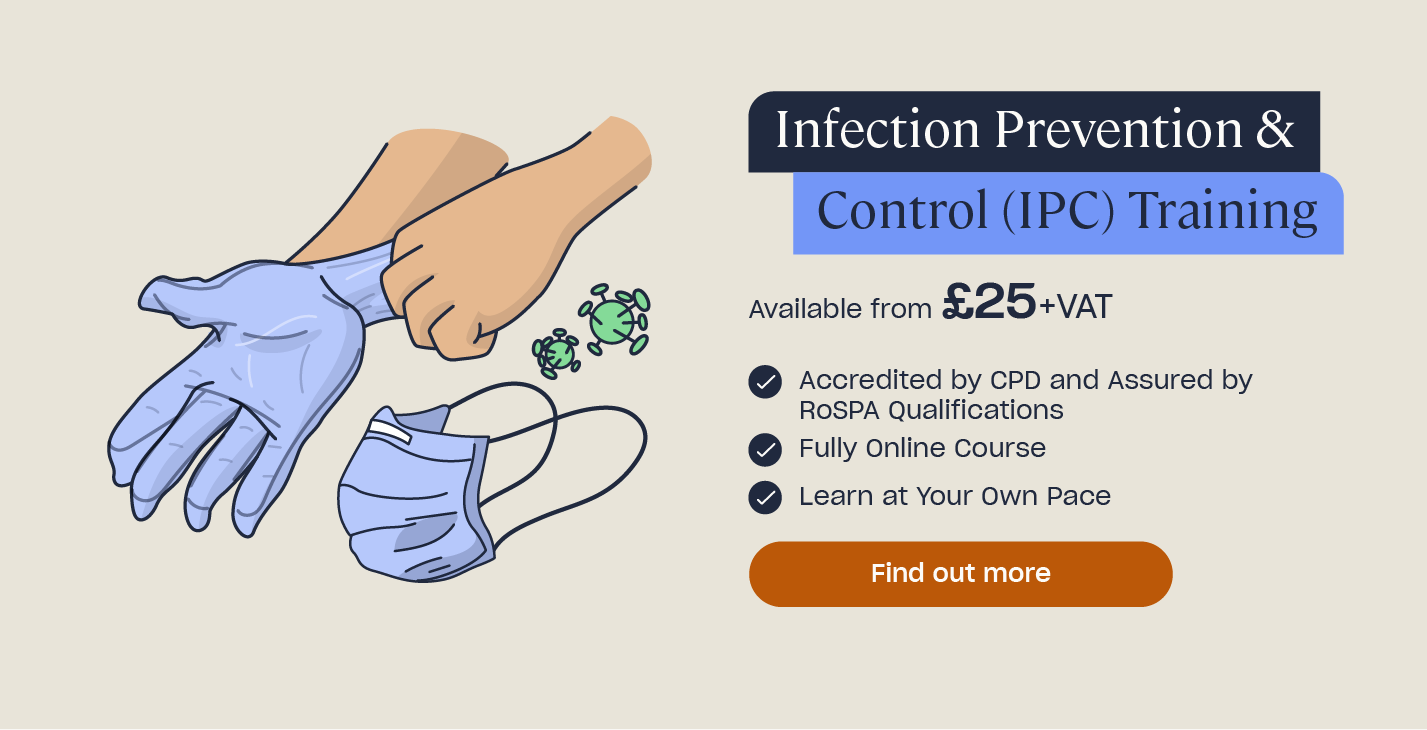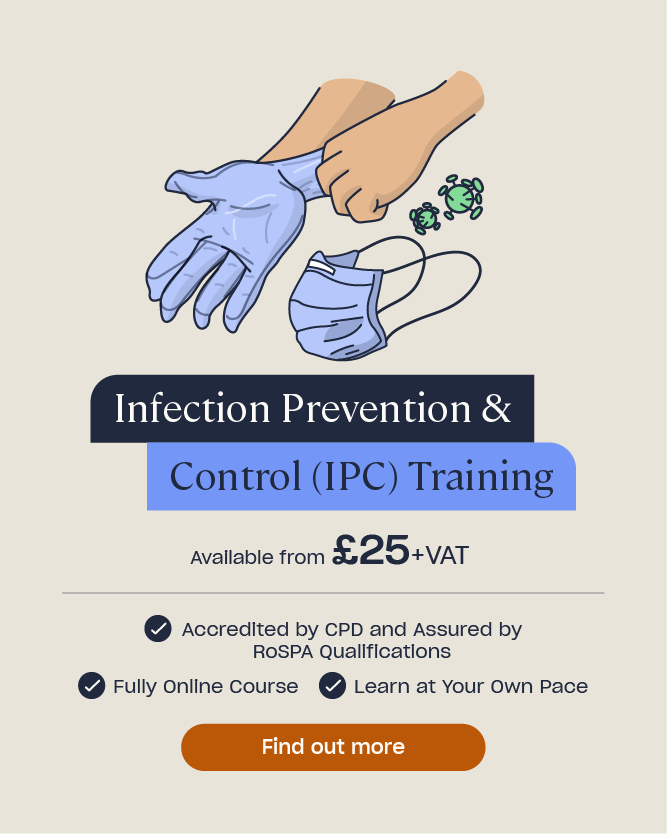How to Prevent Infection: Five Simple Tips
Working around or directly with humans or animals comes with a serious risk of transferring infections.
Let’s say you work in a hospital. If proper infection control is not put into practice, patients with highly contagious infections are a huge risk to others (especially new-borns, the elderly, and those with other illnesses). In fact, an estimated 300,000 patients a year in England acquire healthcare-associated infections, likely due to inadequate infection control.
However, infections can transfer between hosts in any setting where people are exposed to human or animal bodily fluids. All sorts of occupations may require working under such conditions: cleaning public bathrooms, working in sewers or plumbing, launderers, vets, butchers, working in a nursing home, tattooists, animal groomers, waste disposal, and many more.
If this applies to you, it’s essential that you know how to prevent infection from transferring.
Need a Course?
Our Infection Prevention & Control (IPC) course is essential for all businesses, particularly where the working environment or work activities could put employees and those around them at risk of infection.
Read our 5 essential tips for how to prevent infection below.
Hygienic Hand Washing
Hands are the most common vehicles of infectious microorganisms.
Think about how many different things you touch between handwashing. Door handles, light switches, railings, work surfaces, utensils – just to name a few. Although infectious bacteria cannot enter a host through skin contact alone, if you have contaminated hands and then touch your eye, mouth, or a cut, you grant it entry. Or, if you touch another surface before washing your hands, you allow someone else to pick it up.
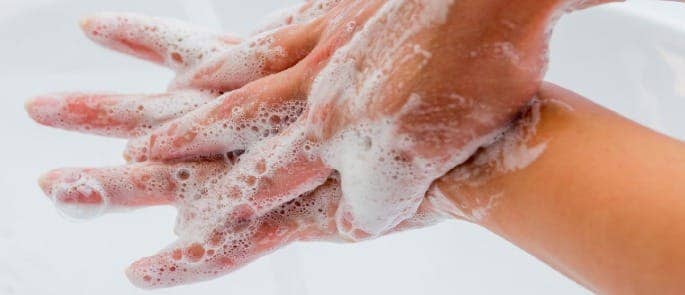
Proper hand washing techniques are therefore vital.
Follow these handwashing steps to remove infectious bacteria:
- Use hot water that is between 35°C and 45°C.
- Wet your hands, then apply liquid antibacterial soap.
- Rub to create a good lather.
- Include fingertips, thumbs, and in-between fingers. Also rub your palms, the back of your hands, and wrists (cup your thumb and index finger around your wrists or thumbs and twist).
- The washing process should last for a duration of 40-60 seconds.
- Rinse off soap with warm running water.
- Dry hands with a clean disposable paper towel.
- Use the disposable paper towel to turn off the tap.
This is the handwashing procedure recommended by the NHS. It is thorough and effective. If you don’t have immediate access to running water, you could use hand sanitisers (in the form of gel or wipes), although they may not be as thorough. You can download our free hand washing poster to display in your premises, here.
When should you wash your hands?
Washing and sanitising your hands at several key moments is the best way to prevent infection: you stop infectious bacteria from ever accessing a route of entry.

To prevent infection, wash your hands before and after:
- Eating or drinking.
- Dressing a wound.
- Carrying out any cleaning or waste disposal activities.
- Taking or administering medicine.
- Applying makeup.
- Smoking.
- Inserting contact lenses.
- Handling a person or animal.
- Activities that involve puncturing a person or animal’s skin.
First Aid for Cuts and Grazes
A cut or graze is a potential entry point or source of infection.
Without proper dressing and sanitisation of a wound, infectious bacteria can enter the bloodstream through the epidermis layer of skin or exposed tissue. On the other hand, if you or someone else carries an infection, it escapes through the blood and other fluids (such as pus) and can go on to infect someone else.
You must give proper first aid to even the smallest of wounds if you work in a high-risk environment. Remember: infectious bacteria are microscopic, so what might seem like a minuscule cut to you is a sufficiently large doorway for them.
Prevent infections with proper wound dressing:
- Choose the right dressing for the wound. For small cuts and grazes, this can be a plaster (adhesive dressing).
- Wash your hands before beginning to dress the wound.
- Wear disposable gloves if you are dressing the wound of another person.
- Gently encourage the wound to bleed to help clear it out.
- Clean the wound under warm running water. Use a saline solution or an alcohol-free wipe to sanitise the area if available.
- Dry the wound by patting it gently with a clean towel or tissue (don’t use anything that tears, disintegrates, or has fluffy residue, which can stick to the wound).
- Apply a sterile plaster. It should be large enough to cover the skin a few centimetres around the wound.
- Apply another plaster if blood seeps through the first one. If blood still comes through, apply pressure to the wound, and try again.
- Wash your hands once you finish.
- Dispose of any wipes or cloths used to clean the wound.
- Thoroughly sanitise the area you used to wash the wound.
If at any point you feel you cannot sufficiently dress a wound, or if the wound does not stop bleeding or has something embedded in it, do not proceed further. Seek medical advice immediately.
If after cleaning and dressing a wound infection has still occurred, seek medical attention. Symptoms include pain, swelling, redness, a burning sensation, discharge of pus or fluid, a foul odour, warmth around the wound, and red streaks extending from the affected area.
Personal Protective Clothing
Wearing protective clothing is another essential measure for preventing the spread of infection. The more you block its path to your body and other surfaces, the better.
Always wear protective gloves when working around, or directly with, infectious people or animals or their bodily fluids. If you come into contact with something or someone infected, do not then touch someone else or another surface. Remove gloves safely and dispose of them hygienically after you finish that specific activity.
You must also wear gloves if you perform any activities that involve deliberately piercing skin. For example, tattooing, administering medication to a human or animal, or performing acupuncture.
If the risk of infection is very high (due to the quantity of waste being handled, the presence of infectious aerosols, or the risk of blood or other fluids splashing), you must wear further protective equipment.
Other protective clothing for infection control includes:
- Heavy-duty gloves.
- Aprons.
- Gowns.
- Face masks.
- Eye protection (e.g. goggles or visors).
- Full body suits or coveralls.
The individual in charge of health and safety and infection control in your premises should carry out a risk assessment to determine what equipment is required. You must follow orders to wear protective clothing during work activities if asked; it is a vital safety measure.
Always wash your hands after removing protective equipment (yes, even if you were wearing gloves).
Correct Waste Disposal
Infectious waste is a categorical risk. The materials may all be contained in one place, multiplying the presence of infectious bacteria by potentially tenfold.
Infectious waste is anything contaminated with human and/or animal blood, fluids (e.g. saliva or pus), waste products (e.g. faeces and urine), or skin or tissue. These substances can contaminate any object. It is of paramount importance to properly dispose of or sanitise anything contaminated.
Be sure to wear your protective equipment at all times when handling waste, and to wash your hands with the method described above after removing your PPE.
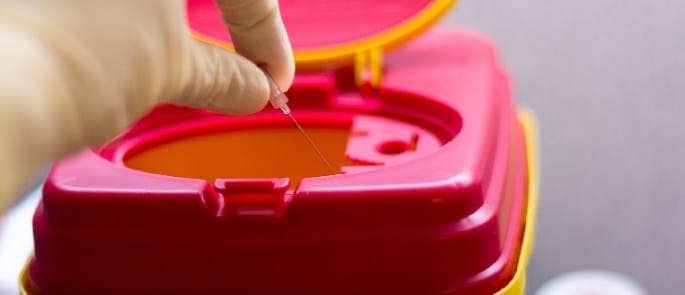
Always follow the procedures and training provided to you relating to infectious waste disposal in your premises.
Specific bio-hazard containers and non-puncture bags should be available for holding infectious waste, such as syringes and blades, bandages, soiled clothing, and materials used to clean wounds. Use them in accordance with any information provided.
You should also receive instructions about where to incinerate certain materials if necessary and where to deposit containers or bags for collection. Follow these instructions carefully.
For further information on safely disposing of infectious waste, read our comprehensive guide: What Methods Can Be Used for the Disposal of Infectious Waste?
Cleaning and Sanitising
You must destroy infectious bacteria to prevent them from spreading. Cleaning yourself, surfaces, and non-disposable materials and tools in a high-risk setting is of utmost importance.
Follow these cleaning and sanitising tips to remove infectious bacteria:
- Always wash your hands before and after certain activities, as described in the above hygienic hand washing section.
- Wash non-disposable protective clothing and other materials regularly (e.g. non-disposable towels, cloths, and bedding) at a high temperature with suitable detergent.
- Regularly clean areas that may have been exposed to infectious bacteria (e.g. patient rooms, toilets, and anywhere an animal has been). The disinfectant used must be the right type to kill microorganisms and the process should not create infectious aerosols (so don’t use water spray).
- Transfer non-disposable equipment to the sterilisation department for decontamination (e.g. knives, scalpels, and other tools). Your workplace must adhere to the local policy for cleaning the equipment.
- Clean spillages of infectious materials by following the workplace’s cleaning procedures. If you are not trained to do so, block off the area and notify someone immediately, so a qualified cleaner can attend to it.
- Have an emergency clean up kit present. Keep the kit in a central location so it is readily accessible. It should include an absorbent, floor-sweeping material, liquid soap, disinfectant, a bucket, rubber or plastic gloves, disposable towels or tissues, and impermeable plastic bags.
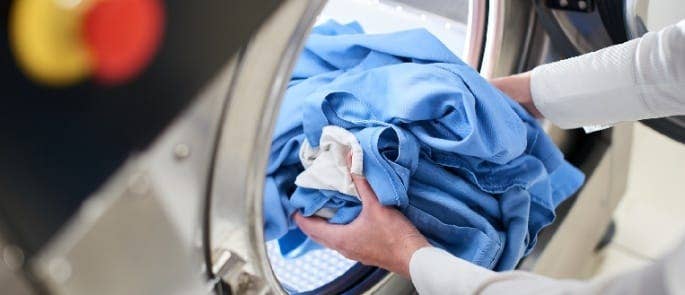
By carrying out proper cleaning and sanitising procedures, the presence of infectious bacteria can be kept to an absolute minimum, and contamination entirely prevented.
What to Read Next:
- What Methods Can Be Used for the Disposal of Infectious Waste?
- What is a Spill Kit? Contents Checklist
- The 7 Steps of Hand Washing – Free Poster
- Hand Hygiene and Infection Control Quiz
- Infection Control and Prevention Course


